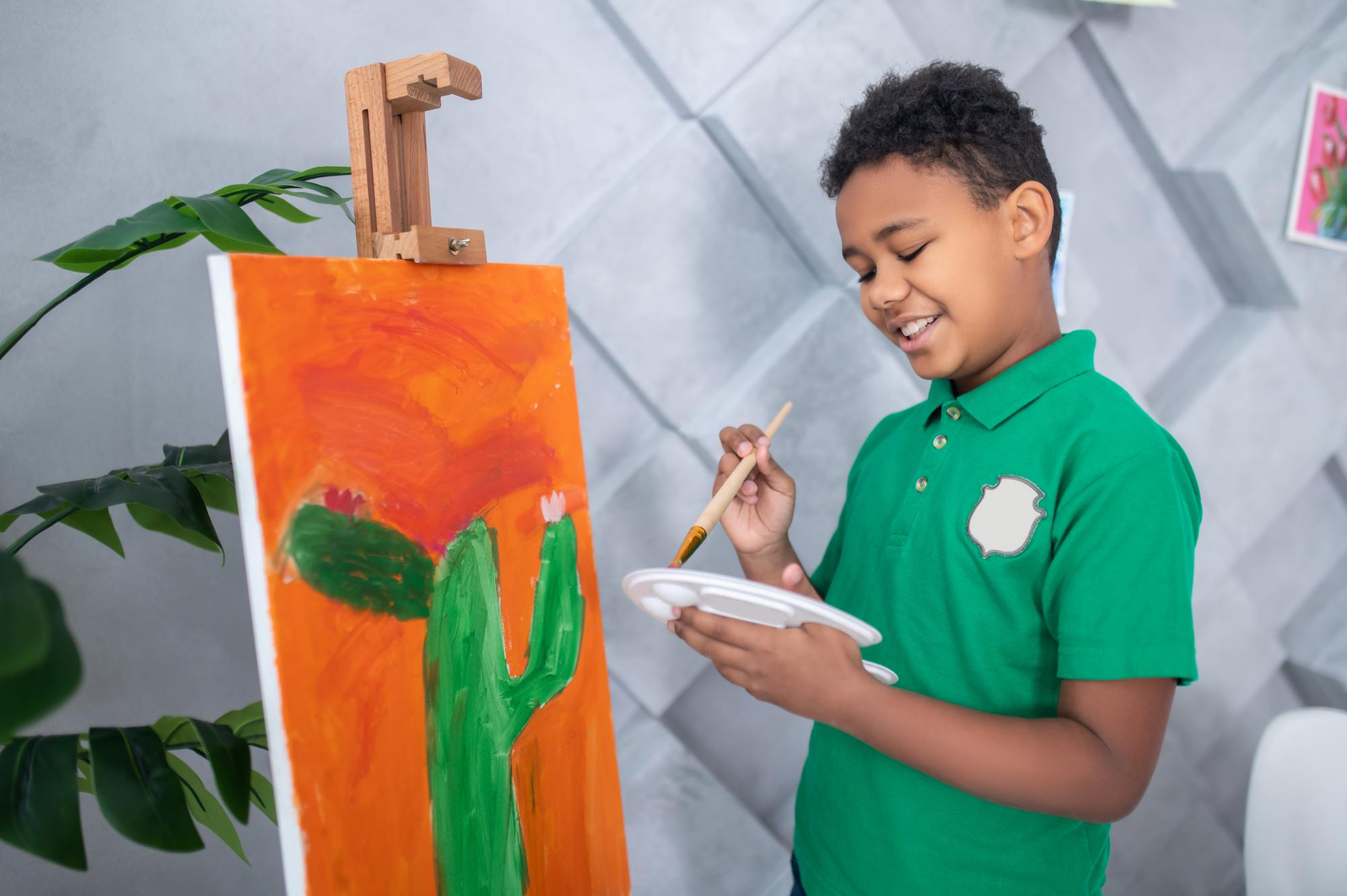The relevance of art in early childhood education
Do you know that art is not just about fun and entertainment?
Yes!
Art is not only used for entertaining children. They are also educational! Art allows young children to explore and experiment. This sort of free exploration helps children form connections in their brains, which helps them learn.
Art is necessary for all children. Especially at the earliest age, since their brain is still maturing and is highly sensitive. Art allows children to express emotions, develop ideas and stimulate creativity. In addition, students who study art are four times more likely to be recognized for academic achievement and three times more likely to be awarded for school attendance.
When you hear the phrase “arts in education”, think about visual arts, drama, dance, music and play. In classrooms, teachers use visual art to encourage speaking, listening, and vocabulary development. Children are given materials with which they create their unique artwork. Teachers use music to help children to retain information, develop listening skills, and understand tone, beat, and rhythm. Teachers use familiar songs or rhymes to teach math facts and grammar.
Here are some benefits of art in early childhood education.
- Encourages brain development: Art encourages neural connections. That’s because art engages all of the senses. With every new information, the brain makes billions of new connections. The synapses in the brain of children become excited as they participate in artistic activities and enhance their creativity. Art also improves self-esteem and mental health.
- Development of motor skills: Motor skills are skills that enable movements and completion of tasks. Fine motor skills require a high degree of control and precision. Gross motor skills allow for balance, coordination, reaction time, and physical strength—all needed for walking, running and jumping. Arts and crafts require lots of movement. A child develops fine motor skills as they hold and use paintbrushes or crayons. Other actions, such as using scissors, help children develop motor skills.
- Strengthens critical thinking and problem-solving skills: Critical thinking is needed to navigate new experiences and problem-solve when necessary. Studies show that art education improves critical thinking and problem-solving skills in children. Art encourages children to make decisions–a skill required for future success. Art also encourages children to try new things, improving creativity and imagination.
- Language development: By learning the words for colours and shapes, art enables children to expand their vocabulary. They also learn to express their feelings or accurately describe actions.
- Promotes cultural awareness: Arts bring different people together. Exposing children to diverse interpretations of society is a great way to help them understand their environment and embrace the diversity they see around them.
- Communication: Through making art, children learn how to communicate. Art provides a safe space for children to express themselves. They can tell an invented story, explore alternative narratives and share with others.
The use of art in education doesn’t end in the early-education classroom (preschool). You can also introduce art learning at home too. Here are three art projects you can use to expand your child’s learning:
Number Collages
Instructions
- Get materials, such as beans, cotton balls, small fake flowers, straws or sticks.
- Draw a simple object on a large piece of paper. For example, umbrellas.
- Give your child a large piece of paper and some glue.
- Have your child glue the beans or straws on the paper.
Milk Painting
Milk painting is an exciting science project. Your child will love it. For this experiment, you will need milk and dish soap. Because milk contains fat, the food colouring will float. However, when you add dish soap to the milk, the fat separates and moves to make your magical milk art!
Materials
- Milk
- Dish soap
- Cotton swabs or toothpicks
- Food colouring (more than one colour)
- Plate or bowls
Instructions
- Pour milk into the bowl. Be careful not to move the bowl. The milk should be as still as possible.
- Put one drop of each colour on different spots in the bowl containing milk.
- Put just a tiny amount of soap on the end of the cotton swab, then touch one of the colours. You’d notice a “colour burst”.
- To clean up, just pour the milk down the drain. (Do not drink it)
Cloud Painting
Materials
- Construction paper (shades of blue and white preferred)
- Washable paint in shades of blue and white
- Cotton balls
Instructions
- Pour the paint into individual small containers.
- Dip cotton balls into paint and dab onto paper.
- Your cloud painting is ready!
Art offers benefits such as improving critical thinking skills, self-confidence and social development. An early arts education is essential for young children to develop. Even if you are not Picasso, you can still try a few creative activities with your child. There are tons of YouTube videos you can use as a visual guide.

